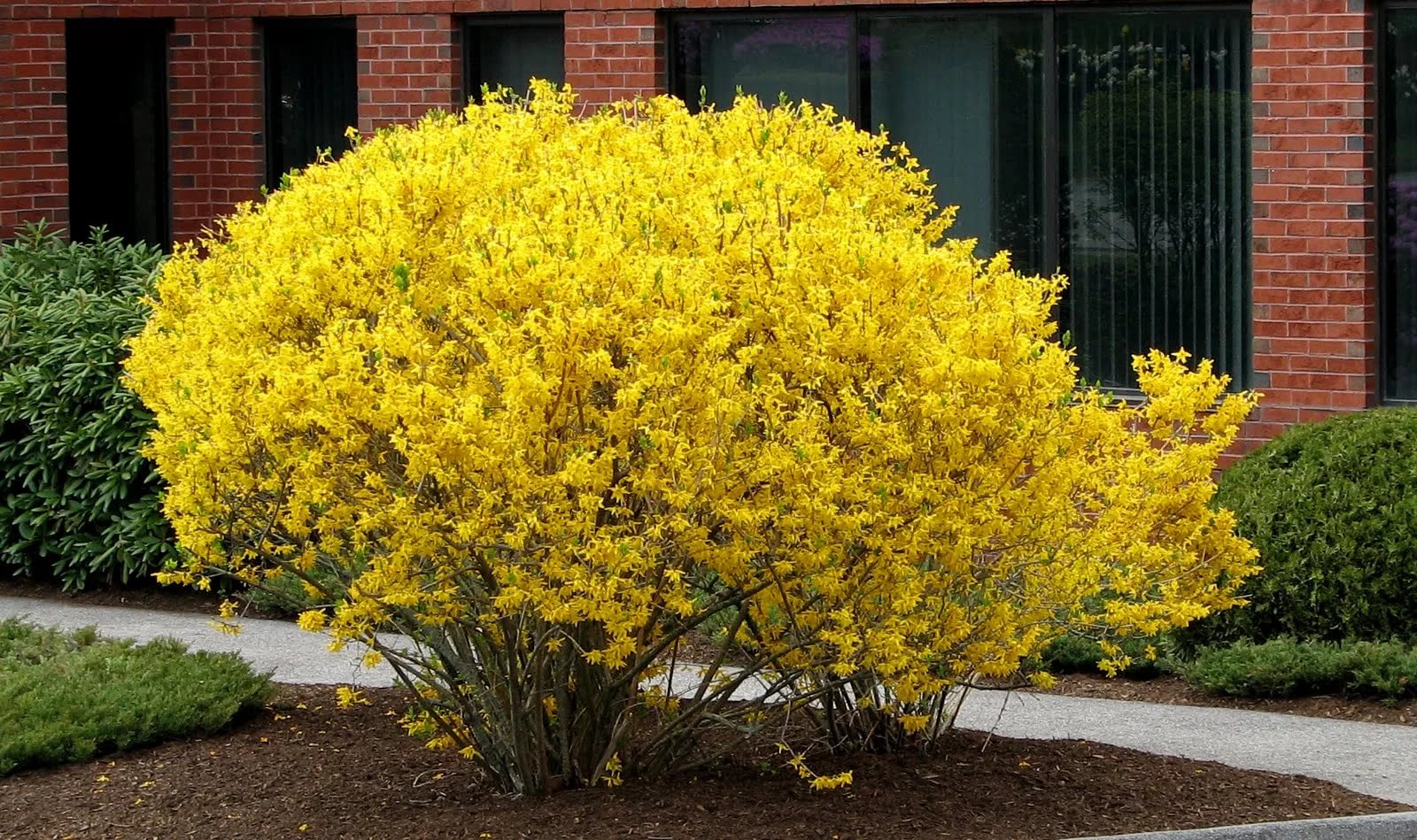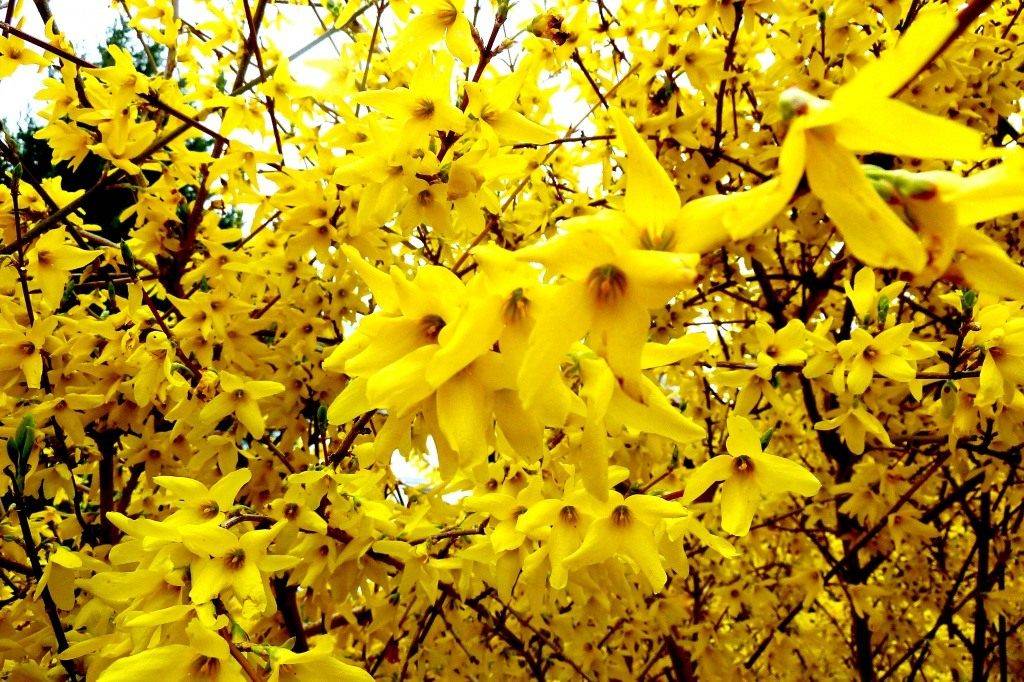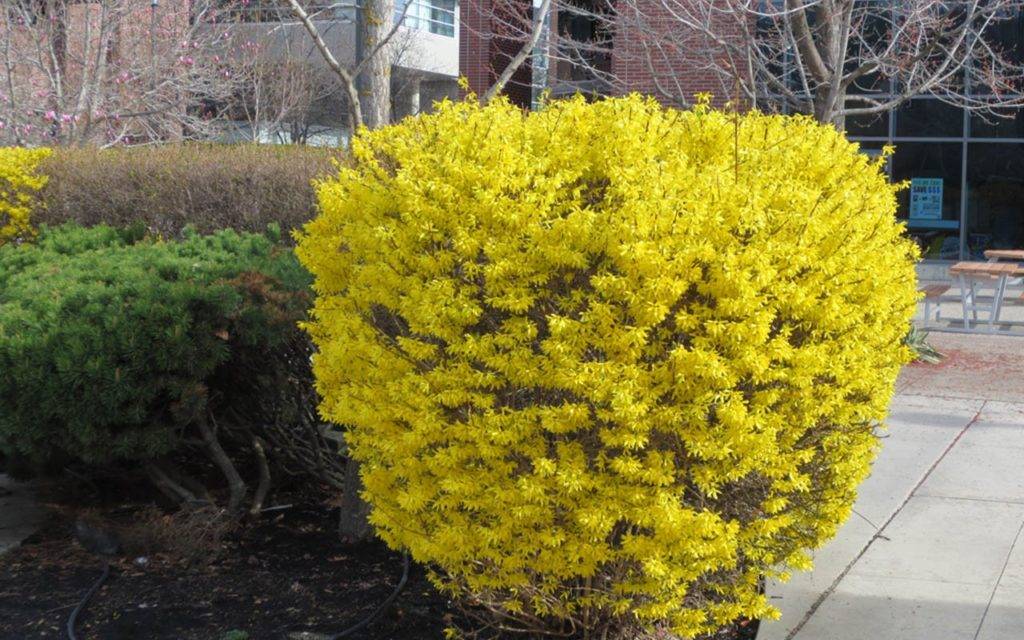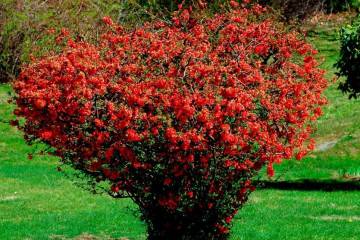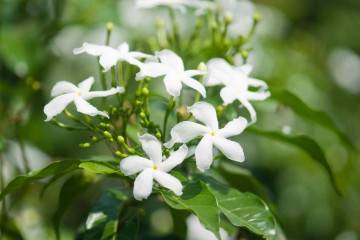Shrub forsythia or yellow fortecia - description
Content:
Among the first primroses in the spring garden is forsythia. Flowers of a bright yellow color appear before foliage and become the first messengers of spring after prolonged cold weather and gray tones of winter.
The origin and appearance of the bush
Forsythia belongs to the Olive family. Shrubs from 1 to 3 m in height are valued for their early and abundant flowering. The homeland of forsythia is the Balkan Peninsula and East Asia. For several centuries it has been used in landscape gardening. Most species prefer warm climates, but some varieties are frost-resistant and able to grow in temperate climates.
This plant was named after the Scottish scientist W. Forsythe. The grower's interest was attracted by a flowering bush during an expedition to China. He brought the plant home and was able to propagate it.
The yellow forsythia shrub blooms in early spring, at which time the plant resembles a gilded ball. The bloom of forcisia is so exuberant that there is no room for foliage, and it appears after the flowers wither. After flowering, the shrub also attracts attention with its dark green leaves, which turn purple in autumn.
Small bright yellow bell-shaped flowers are collected in inflorescences of 3-5 pcs. When it rains, the flowers close together. After the end of flowering, a fruit is formed with a seed box with lionfish.
Types and varieties
In botany, there are 7 main species, there are many more varietal crops. The main types are described below.
Forsythia European (Forsythia europaea) grows in the natural environment in Albania and Kosovo, prefers rocky areas of woodlands. The plant grows rapidly (it grows by 25 cm per year). The height of an adult bush is 2 m. It blooms in March-April with golden yellow flowers 7 cm long. In a suitable climate and with appropriate care, forsythia grows up to 70 years. It is characterized by frost resistance, when it freezes in spring, the shoots easily regenerate.
Forsythia drooping (Forsythia suspensa) is named for its long arched shoots hanging down to the ground. The height of the bush reaches 3 m. Yellow bell flowers are collected in inflorescences of 3-5 pcs. A perennial bush blooms for 5 years after planting.
Forsythia intermediate (Forsythia intermedia) is a 3-meter bush that blooms 3 years after planting. The first flowers appear at the end of April. On even stems, pale yellow flowers bloom, which are located at a close distance from each other, forming an inflorescence.
Forsythia ovate (Forsythia ovata Nakai) calmly tolerates frost and drought. It reaches a height of no more than 2 m. The flowering period is short (about 2 weeks). Small solitary yellow flowers. The plant is able to bloom only 4 years after planting in a permanent place.
Forsythia dark green (Forsythia Veridissima) is a tall bush, reaching 3 m, with a green crown. The name of the species characterizes the description of the plant: it is covered with large dark green leaves, and the flowers are yellow-green in color. The perennial begins to bloom 5 years after planting and does it a year later.The plant is unpretentious to the soil and withstands drought well, reacts negatively to a decrease in temperature.
Snow forsythia (Forsythia abeliophyllum) stands out among other species with thick snow-white inflorescences. The height of the bush is no more than 1.5-2 m. Oval leaves are dark green in color, their length is 8 cm, purple pigment appears in them in autumn. The flowering shrub vaguely resembles a snowdrift.
Forsythia Giraldiana (Forsythia giraldiana) has an external resemblance to European forsythia. The heat-loving plant grows up to 2 m in height. The color of the leaf on the front side is dark green, and on the bottom it is paler. Large yellow flowers appear in May.
Forsythia transplant after purchase
The planting of the purchased forsythia is started in the spring or at the beginning of autumn, so that the plant has time to take root before winter. The place should be sunny, protected from the wind, but you can plant in partial shade. The shrub is unpretentious to the composition of the soil, it is desirable that the pH of the soil be shifted to the alkaline side.
Step-by-step process of planting shrubs in open ground:
- Dig a hole 50 × 50 × 60 cm in size so that the root system with an earthen lump is at a depth of 30-40 cm.When planting several plants, the distance between them must be kept at least 1.5 m.
- Fill the hole with a drainage layer (15-20 cm), then sand, peat with woody and leafy soil.
- Lower the seedlings into the holes, sprinkle with earth, compact the top layer and water abundantly.
Shrubs planted in spring do not require any special conditions in the future, just the usual care of the plant. For the autumn planting of forsythia, additional measures will be needed - mulching the soil with foliage and sheltering with breathable material for the winter.
Reproduction methods
Forsythia is capable of propagating through seeds and vegetatively.
Growing a crop from seed is a laborious, time-consuming process that rarely brings positive results. After flowering, the ripe seeds are harvested and sown in the fall in open ground. In winter, they undergo a natural process of stratification, and in spring, seedlings appear. After a year, the plants dive, and after 3 years they are transplanted to a permanent place.
You can also germinate seeds in spring in containers with a sandy-peat substrate, covering them with a film. The germination rate of such seeds is no more than 50-60%. In the second year, the seedlings dive into open ground, carefully protecting the plants in winter. Flowering will come only in 4-6 years.
The vegetative method of reproduction is carried out by cuttings, layering and dividing the basal shoots. Reproduction of a perennial by cuttings is carried out at the beginning of summer, when the inflorescences have already faded. Cut green shoots of 15 cm are placed in a convenient container with wet sand and stretch the film. After 2 months, shoots with roots are planted in the soil.
For breeding with layering, it is enough to press the young stem of forsythia to the ground and secure it with wire, make an incision and cover it with fertile soil. Roots will appear on the shoot soon. In the spring, the branch is separated from the bush and after a year the young plant will delight you with lush flowering.
Bush care
It is not difficult to take care of a decorative centenarian. If it rains regularly in summer, then there is no need for additional watering; in dry times, forsythia is watered 1-2 times a month (10-12 liters under one bush).
Top dressing of the bush is carried out 3 times a season. The first time this is done in early spring, spreading rotted manure at the base of the bush. It will become not only organic fertilizer for the plant, but also mulch.For dense flowering in April, forsythia is fertilized with mineral dressings. For the third time, a universal top dressing is applied after flowering, when flower buds begin to form for the next year.
To ensure flowering in the spring for the winter, the plant is covered. Pine spruce branches, mown grass, fallen leaves, or specialized materials (agrofibre) can serve as a shelter. It is not recommended to cover forsythia with polyethylene, since the forming flower buds can rot. You can make the shelter process easier by tying the branches and bending them to the ground.
Pruning plays an important role in caring for the bush. Sanitary pruning is enough for young crops when broken, dried and dying shoots are removed. On adult specimens, additional pruning of the stems is carried out in the summer after flowering. Faded branches are shortened, old and dried ones are cut off at a level of 4-6 cm from the soil.
With the help of pruning, the old bush is rejuvenated. In this case, all branches are cut at a height of 4-6 cm to activate the growth of young shoots. The rejuvenation of the bush is carried out every 3-4 years.
All activities for the care and cultivation of forsythia do not require much effort. At the same time, the decorative bush will delight you with bright flowering in early spring and will decorate any personal plot or park bed.
